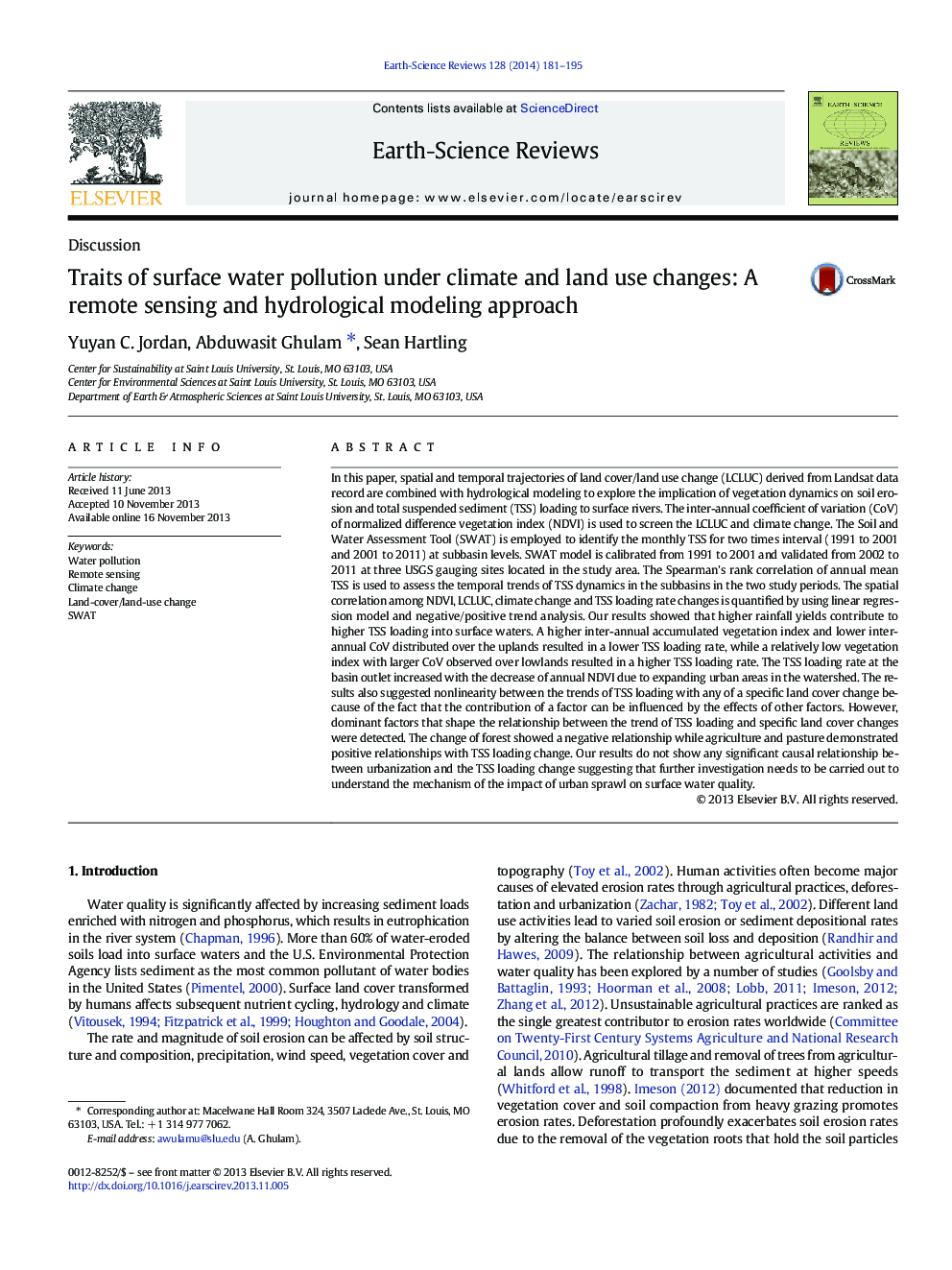| کد مقاله | کد نشریه | سال انتشار | مقاله انگلیسی | نسخه تمام متن |
|---|---|---|---|---|
| 4725805 | 1639974 | 2014 | 15 صفحه PDF | دانلود رایگان |
In this paper, spatial and temporal trajectories of land cover/land use change (LCLUC) derived from Landsat data record are combined with hydrological modeling to explore the implication of vegetation dynamics on soil erosion and total suspended sediment (TSS) loading to surface rivers. The inter-annual coefficient of variation (CoV) of normalized difference vegetation index (NDVI) is used to screen the LCLUC and climate change. The Soil and Water Assessment Tool (SWAT) is employed to identify the monthly TSS for two times interval (1991 to 2001 and 2001 to 2011) at subbasin levels. SWAT model is calibrated from 1991 to 2001 and validated from 2002 to 2011 at three USGS gauging sites located in the study area. The Spearman's rank correlation of annual mean TSS is used to assess the temporal trends of TSS dynamics in the subbasins in the two study periods. The spatial correlation among NDVI, LCLUC, climate change and TSS loading rate changes is quantified by using linear regression model and negative/positive trend analysis. Our results showed that higher rainfall yields contribute to higher TSS loading into surface waters. A higher inter-annual accumulated vegetation index and lower inter-annual CoV distributed over the uplands resulted in a lower TSS loading rate, while a relatively low vegetation index with larger CoV observed over lowlands resulted in a higher TSS loading rate. The TSS loading rate at the basin outlet increased with the decrease of annual NDVI due to expanding urban areas in the watershed. The results also suggested nonlinearity between the trends of TSS loading with any of a specific land cover change because of the fact that the contribution of a factor can be influenced by the effects of other factors. However, dominant factors that shape the relationship between the trend of TSS loading and specific land cover changes were detected. The change of forest showed a negative relationship while agriculture and pasture demonstrated positive relationships with TSS loading change. Our results do not show any significant causal relationship between urbanization and the TSS loading change suggesting that further investigation needs to be carried out to understand the mechanism of the impact of urban sprawl on surface water quality.
Journal: Earth-Science Reviews - Volume 128, January 2014, Pages 181–195
